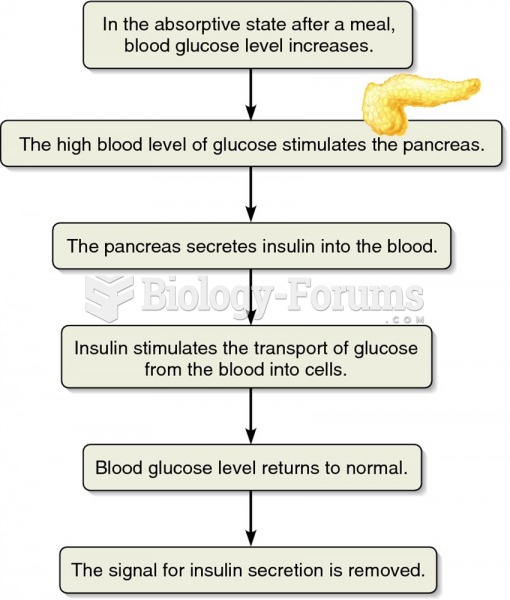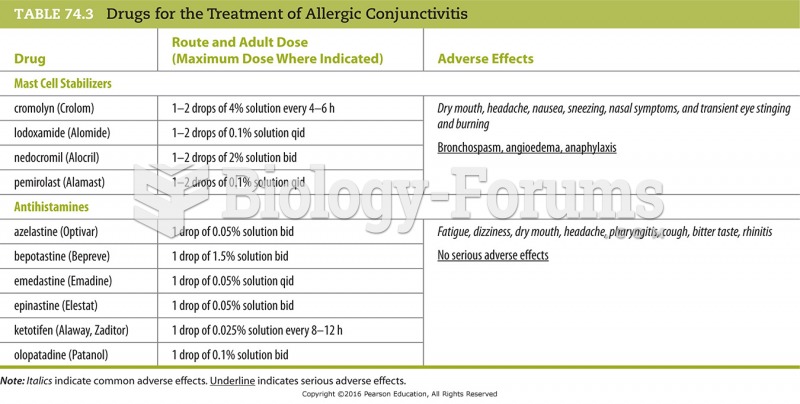|
|
|
The U.S. Pharmacopeia Medication Errors Reporting Program states that approximately 50% of all medication errors involve insulin.
The first documented use of surgical anesthesia in the United States was in Connecticut in 1844.
In the United States, there is a birth every 8 seconds, according to the U.S. Census Bureau's Population Clock.
People with high total cholesterol have about two times the risk for heart disease as people with ideal levels.
A strange skin disease referred to as Morgellons has occurred in the southern United States and in California. Symptoms include slowly healing sores, joint pain, persistent fatigue, and a sensation of things crawling through the skin. Another symptom is strange-looking, threadlike extrusions coming out of the skin.







